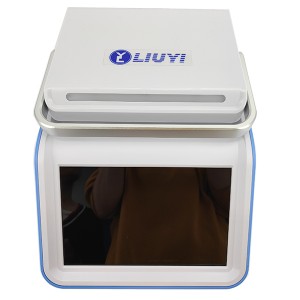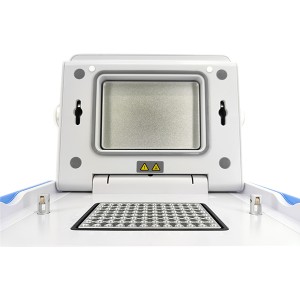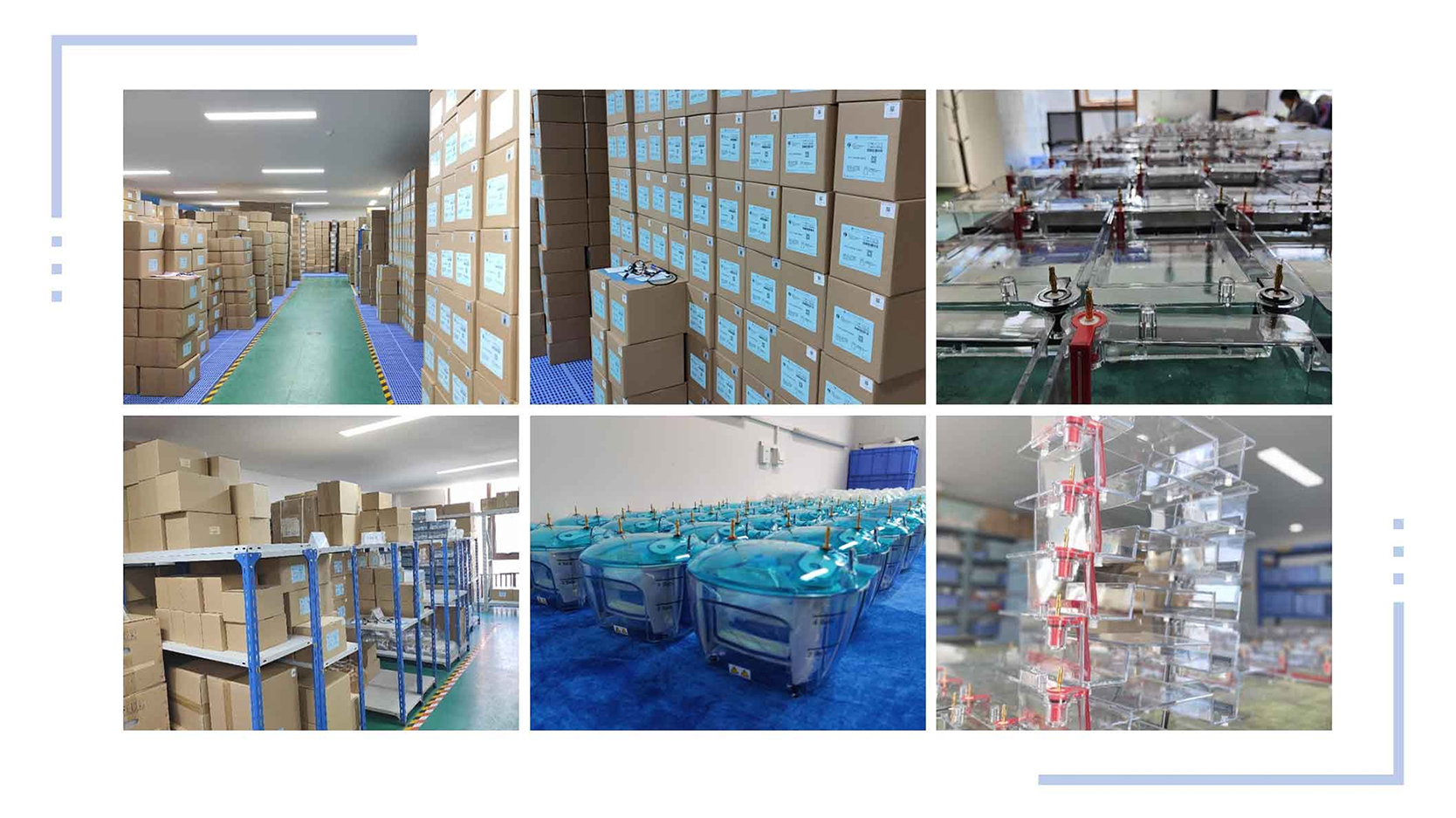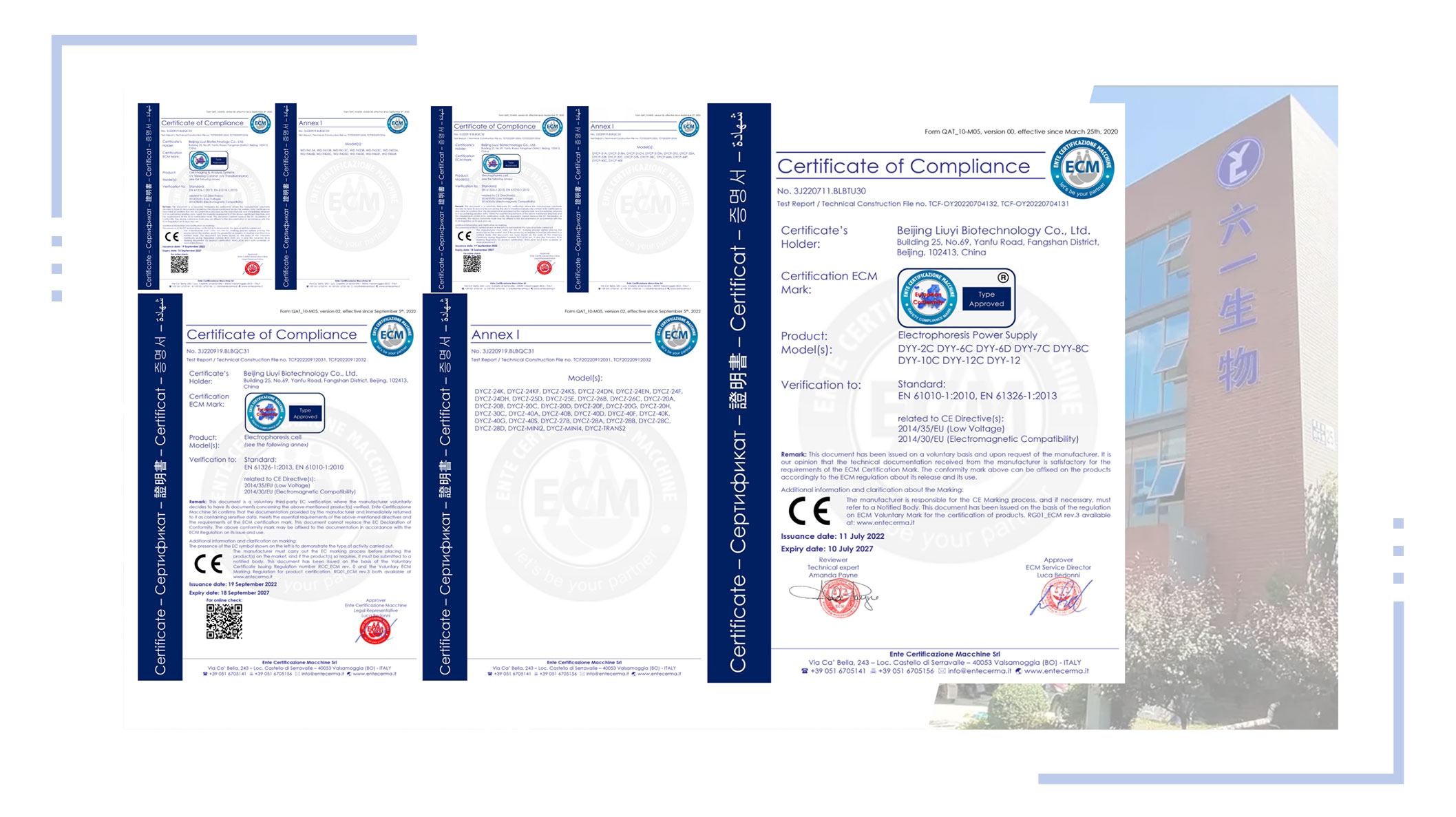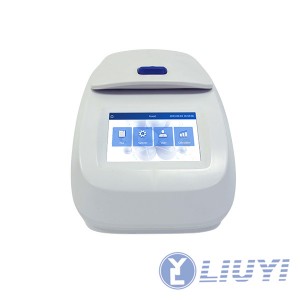PCR Thermal Cycler WD-9402D
Specifications
| Model | WD-9402D |
| Capacity | 96×0.2ml |
| Tube | 0.2ml tube, 8 strips, Half skirt96 wells plate,No skirt 96 wells plate |
| Reaction Volume | 5-100ul |
| Temperature Range | 0-105℃ |
| MAX. Ramp Rate | 5℃/s |
| Uniformity | ≤±0.2℃ |
| Accuracy | ≤±0.1℃ |
| Display Resolution | 0.1℃ |
| Temperature Control | Block/Tube |
| Ramping Rate Adjustable | 0.01-5℃ |
| Gradient Temp. Range | 30-105℃ |
| Gradient Type | Normal Gradient |
| Gradient Spread | 1-42℃ |
| Hot Lid Temperature | 30-115℃ |
| Number of Programs | 20000 +(USB FLASH) |
| Max. No. of Step | 40 |
| Max. No. of Cycle | 200 |
| Time Increment/Decrement | 1 Sec - 600 Sec |
| Temperature Increment/Decrement | 0.1-10.0℃ |
| Pause Function | Yes |
| Auto Data Protection | Yes |
| Hold at 4℃ | Forever |
| Touchdown Function | Yes |
| Long PCR Function | Yes |
| Language | English |
| Computer Software | Yes |
| Mobile phone APP | Yes |
| LCD | 10.1 inch,1280×800 pels |
| Communication | USB2.0 , WIFI |
| Dimensions | 385mm× 270mm× 255mm (L×W×H) |
| Weight | 10kg |
| Power Supply | 100-240VAC , 50/60Hz , 600 W |
Description
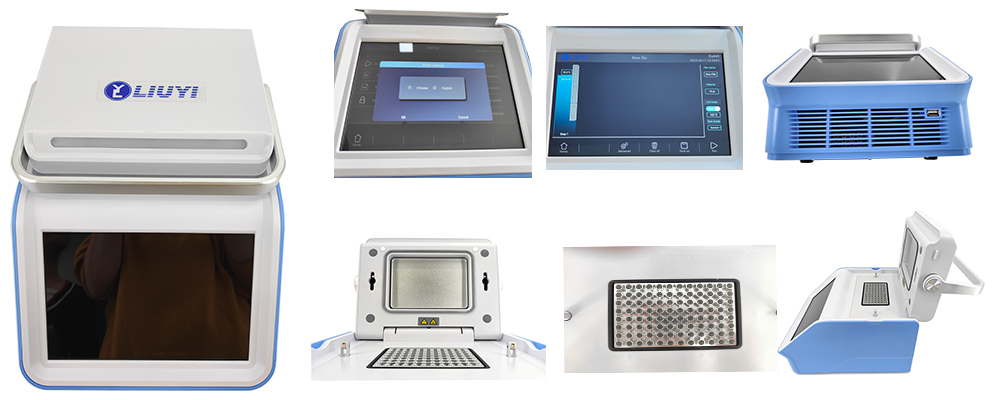
The thermal cycler operates by repeatedly heating and cooling the reaction mixture containing the DNA or RNA template, primers, and nucleotides. The temperature cycling is controlled precisely to achieve the necessary denaturation, annealing, and extension steps of the PCR process.
Typically, a thermal cycler has a block containing multiple wells or tubes where the reaction mixture is placed, and the temperature in each well is controlled independently. The block is heated and cooled using a Peltier element or other heating and cooling system.
Most thermal cyclers have a user-friendly interface that allows the user to program and adjust the cycling parameters, such as the annealing temperature, extension time, and number of cycles. They may also have a display to monitor the progress of the reaction, and some models may offer advanced features such as gradient temperature control, multiple block configurations, and remote monitoring and control.
Application
Genome cloning; Asymmetric PCR preparation of single-stranded DNA for DNA sequencing; Inverse PCR for determination of unknown DNA regions; reverse transcription PCR (RT-PCR). For detecting gene expression level in cells, and amount of RNA virus and direct cloning of cDNA with specific genes; rapid amplification of cDNA ends; detection of gene expression; can be applied to the detection of bacterial and viral diseases; diagnosis of genetic diseases; diagnosis of tumors; medical research such as forensic physical evidence, cannot be used in medicine clinical research.
Featured
• High heating and cooling rate, max. Ramping rate 8 ℃/s;
• Automatic restart after power failure. When power is restored it can continue to run unfinished program;
• One-click quick incubation function can meet experiment’s needs such as denaturation, enzyme cutting/enzyme-link and ELISA;
• Hot lid temperature and hot lid work mode can be set to meet different experiment's need;
• Uses temperature cycling-specific long-life Peltier modules ;
• Anodized aluminum module with engineering reinforcement, which retains fast heat conduction performance and has sufficient corrosion resistance;
• Rapid temperature ramp rates, with a maximum ramp rate of 5°C/s, saving valuable experimental time;
• Adaptive pressure bar-style thermal cover, which can be closed tightly with one step and can adapt to different tube heights;
• Front-to-back airflow design, allowing machines to be placed side by side;
• Uses the Android operating system, matched with a 10.1-inch capacitive touch screen, with a graphical menu-style navigation interface, making operation extremely simple;
• Built-in 11 standard program file templates, which can quickly edit the required files;
• Real-time display of program progress and remaining time, supporting mid-programming of the PCR instrument;
• One-button quick incubation function, meeting the needs of experiments such as denaturation, enzyme digestion/ligation, and ELISA;
• The hot cover temperature and hot cover operating mode can be set to meet different experimental needs;
• Automatic power-off protection, automatically executing unfinished cycles after power is restored, ensuring safe operation throughout the amplification process;
• USB interface supports PCR data storage/retrieval using a USB drive and can also use a USB mouse to control the PCR instrument;
• Supports software updates via USB and LAN;
• Built-in WIFI module, allowing a computer or mobile phone to simultaneously control multiple PCR instruments through a network connection;
• Supports email notification when the experimental program is complete.
FAQ
Q: What is a thermal cycler?
A: A thermal cycler is a laboratory device used to amplify DNA or RNA sequences through the polymerase chain reaction (PCR). It works by cycling through a series of temperature changes, allowing specific DNA sequences to be amplified.
Q: What are the main components of a thermal cycler?
A: The main components of a thermal cycler include a heating block, thermoelectric cooler, temperature sensors, a microprocessor, and a control panel.
Q: How does a thermal cycler work?
A: A thermal cycler works by heating and cooling DNA samples in a series of temperature cycles. The cycling process involves denaturation, annealing, and extension stages, each with a specific temperature and duration. These cycles allow specific DNA sequences to be amplified through the polymerase chain reaction (PCR).
Q: What are the important features to consider when choosing a thermal cycler? A: Some important features to consider when choosing a thermal cycler include the number of wells or reaction tubes, the temperature range and ramp speed, the accuracy and uniformity of temperature control, and the user interface and software capabilities.
Q: How do you maintain a thermal cycler?
A: To maintain a thermal cycler, it is important to regularly clean the heating block and reaction tubes, check for wear and tear on components, and calibrate the temperature sensors to ensure accurate and consistent temperature control. It is also important to follow the manufacturer's instructions for routine maintenance and repair.
Q: What are some common troubleshooting steps for a thermal cycler?
A: Some common troubleshooting steps for a thermal cycler include checking for loose or damaged components, verifying proper temperature and time settings, and testing the reaction tubes or plates for contamination or damage. It is also important to refer to the manufacturer's instructions for specific troubleshooting steps and solutions.











